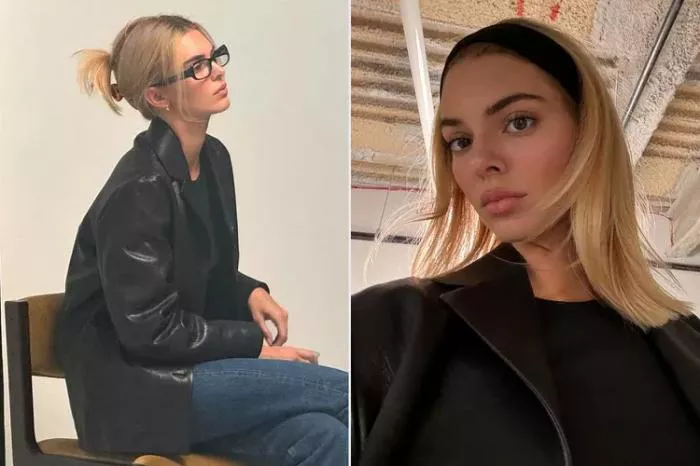Blonde hair is a timeless choice, symbolizing brightness, youthfulness, and versatility. However, maintaining that perfect shade of blonde requires effort and knowledge. One of the most common questions clients ask is: “How long does blonde dye last?” The answer isn’t straightforward—it depends on multiple factors.
In this detailed guide, we’ll explore everything you need to know about the lifespan of blonde hair color, from application techniques to aftercare tips. Let’s dive in!
Why Blonde Hair Requires Special Attention
Blonde hair, whether natural or dyed, is often more fragile and prone to fading than darker shades. Lighter pigments (like blonde) have smaller molecules that wash out faster, while environmental factors (sun, water, heat) accelerate color loss.
For dyed blonde hair, longevity also depends on the dye type, your natural hair color, and how well you maintain it. Let’s break down the key factors influencing how long your blonde color stays vibrant.
Factors That Determine How Long Blonde Dye Lasts
Here’s a quick overview of what affects blonde dye longevity:
- Your Natural Hair Color: Darker bases require more bleaching, which impacts durability.
- Type of Dye Used: Permanent, semi-permanent, or temporary formulas fade differently.
- Hair Porosity: High-porosity hair absorbs and releases color faster.
- Aftercare Routine: Shampoos, conditioners, and styling habits matter.
- Environmental Exposure: Sun, chlorine, and hard water strip color.
- Touch-Up Frequency: Regular maintenance keeps roots and faded ends in check.
We’ll explore each of these in detail below.
Your Natural Hair Color and Base Shade
Your starting hair color plays a huge role in how long blonde dye lasts.
Dark Hair vs. Light Hair
- Brunettes/Black Hair: Achieving blonde requires bleaching to lift pigment. This process weakens hair cuticles, making dye fade faster (often 4–6 weeks).
- Light Brown/Blonde Hair: Less bleaching is needed, so color lasts longer (6–8 weeks).
Gray Hair
Gray hair is resistant to color due to its lack of natural pigment. Yellow or golden blonde tones may fade unevenly on grays, requiring specialized dyes and frequent touch-ups.
Types of Blonde Dye and Their Longevity
Not all blonde dyes are created equal. Here’s how different formulas perform:
Permanent Blonde Dye
- Duration: 6–8 weeks.
- Pros: Full coverage, long-lasting, ideal for dark bases.
- Cons: Contains ammonia/bleach, which damages hair over time.
Demi-Permanent Dye
- Duration: 4–6 weeks.
- Pros: Ammonia-free, adds shine, gentle fade.
- Cons: Less effective on dark hair.
Semi-Permanent Dye
- Duration: 2–4 weeks.
- Pros: No bleach, minimal damage, great for pastels.
- Cons: Washes out quickly, not for drastic changes.
Temporary Dye (Sprays, Chalks)
- Duration: 1–2 washes.
- Pros: Fun for experimenting.
- Cons: Unreliable for long-term color.
Application Method: Salon vs. At-Home Kits
Where and how you apply blonde dye impacts its staying power.
Professional Salon Services
- Benefits: Stylists use high-quality products, customize formulas, and ensure even coverage.
- Longevity: Up to 8 weeks with proper care.
At-Home Kits
- Risks: Uneven application, over-bleaching, and incorrect toner use lead to premature fading.
- Longevity: Often 3–5 weeks due to user error.
Pro Tip: Visit a salon for complex techniques like balayage or platinum blonde. DIY is better for subtle highlights.
Hair Porosity: The Hidden Factor
Porosity (how well hair absorbs moisture) affects dye retention.
Low Porosity
- Cuticles are tightly closed.
- Result: Dye sits on the surface, fading slower but harder to penetrate initially.
High Porosity
- Cuticles are open/damaged.
- Result: Absorbs dye quickly but releases it fast (fades in 3–4 weeks).
Fix It: Use protein treatments to seal cuticles and reduce porosity.
Aftercare Routine to Extend Blonde Color
Proper maintenance can double your dye’s lifespan.
Follow these steps:
Shampoo and Conditioner
- Use sulfate-free, color-safe products.
- Wash hair 2–3 times weekly (not daily!).
- Try purple shampoo to neutralize brassiness (1–2 times weekly).
Deep Conditioning
- Apply a hydrating mask weekly to prevent dryness and color fade.
Heat Styling
- Always use a heat protectant spray.
- Limit blow-drying, straightening, or curling to 1–2 times weekly.
Water Temperature
- Rinse hair with cool water to seal cuticles and lock in color.
Environmental Threats to Blonde Hair
External factors can strip color faster.
Protect your hair from:
Sunlight
- UV rays oxidize blonde pigments, causing fading and brassiness.
- Solution: Wear hats or use UV-protectant sprays.
Chlorine and Saltwater
- Chlorine turns blonde hair greenish; saltwater dries it out.
- Solution: Rinse hair before swimming and apply conditioner as a barrier.
Hard Water
- Mineral deposits (calcium, magnesium) dull blonde tones.
- Solution: Install a shower filter or use clarifying shampoo monthly.
Touch-Ups and Maintenance Schedule
Blonde hair demands regular upkeep. Here’s a typical timeline:
- Root Touch-Ups: Every 4–6 weeks for permanent dye.
- Toner Refresh: Every 3–4 weeks to combat brassiness.
- Gloss Treatment: Every 6 weeks for shine and vibrancy.
Budget-Friendly Tip: Opt for shadow roots or balayage to stretch time between salon visits.
Common Mistakes That Shorten Blonde Dye Life
Avoid these pitfalls:
- Over-washing with harsh shampoos.
- Skipping heat protectant.
- Using hot tools on wet hair.
- Ignoring deep conditioning.
- DIY bleaching without expertise.
Conclusion
Blonde dye typically lasts 4–8 weeks, but with the right techniques, you can keep it fresh for longer. Prioritize salon-quality applications, invest in sulfate-free products, and shield hair from environmental damage. Remember, healthy hair holds color better—so nourish those strands!
By understanding your hair type, dye formula, and maintenance needs, you’ll enjoy radiant, head-turning blonde hair all year round.
Related topics:
7 Best Brands for Keratin Treatment
Why Is My Hair So Dry After Keratin Treatment?
What Products Can I Use After a Keratin Treatment?


